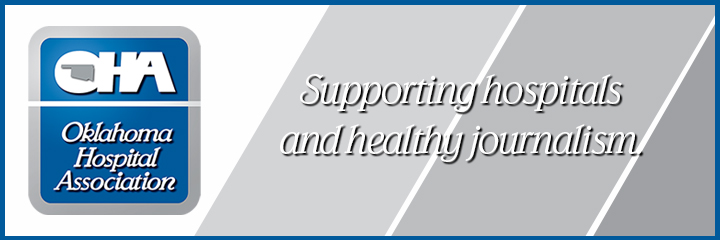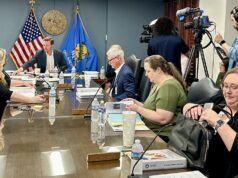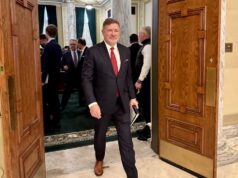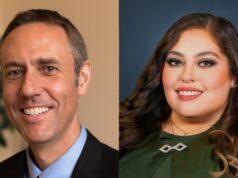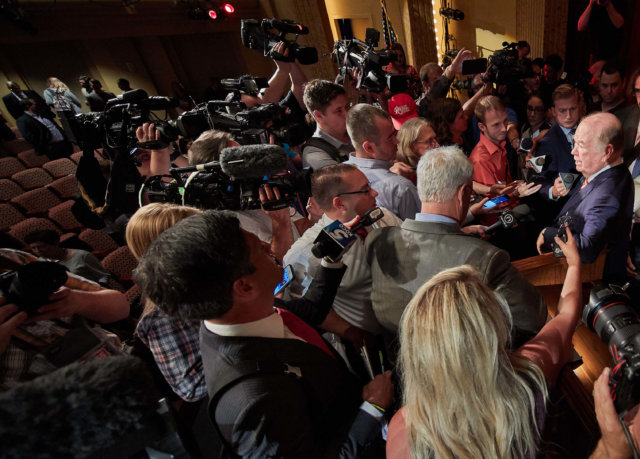
It’s my one thing.
When I was at an academic conference at one of the most elite universities in the country last Spring, a distinguished scholar that I hold in the highest regard, a legend in my field, asked a question that I never expected to be seriously asked.
“So, Andrew, is it true that a lot of people in Oklahoma still don’t actually have running water or electricity in their homes?”
He wasn’t kidding either.
“No. I think FDR and Rural Electrification more or less fixed that. I hear they’ve even got iPhones down in Idabel these days!” I answered in jest. We laughed, awkwardly. He signed my copy of his book. I left to go back to my hotel room.
For all of my criticism of Oklahoma, for everything I dislike about it, I get my one thing: I am proud to be a graduate of the University of Oklahoma. I get to be proud of a university that, since 1994, has transformed itself from a place known only for winning football championships to a leading research university on the cutting edge of meteorology, renewable energy, and genomics research, among other fields.
Travel back with me to OU in 1994
What was the state of Oklahoma’s flagship university in 1994? The flag was tattered and hanging low, to put it mildly. To hear old faculty I know tell it, OU’s upper administration was a revolving door of nobodies, realizing they stepped into a horrible mess of a state: The ’80s oil bust malaise lingered, the faculty were overworked and demotivated, and academic standards were low.
No single individual can take exclusive credit for everything OU has accomplished since 1994. Insofar as one person can be credited with driving the transformation of OU forward, it’s a 76-year-old former United States senator from Seminole.
A laundry list of achievements
Where can I even begin to enumerate his accomplishments? I could mention that he transformed the Norman campus through renovation and construction. God knows that David Boren loves few things more than a ground breaking or ribbon cutting. In Norman, he’s been to quite a few, and the cutting-edge facilities OU students enjoy pay tribute to that.
Or, perhaps, I could mention that he breathed new life into the Health Science Center, where under-served Oklahomans can receive vital care from physician-scholars at the top of their fields. How many of you have heard of the Wayman Tisdale Clinic in North Tulsa? It’s an OU Physicians Clinic for Tulsa’s neglected north side, e.g., not where the oil money lives.
What about the sprawling research campuses in Norman and Oklahoma City? In Norman, for example, OU has a sparkling chemistry building, right next to the Stephenson Research and Technology Center. Bruce Roe, who was one of the leading scientists during the mapping of the human genome, had his last lab there before he retired. You know, OU scientists were only responsible for some of the biggest breakthroughs during that revolutionary project. No big deal and all …
Just across the street is the National Weather Center, a home for meteorologists and atmospheric scientists who lead their fields, including that $161 million dollar NASA grant that I love to mention, something OU Scientists won over other “more prestigious” Universities.
Finally, consider the Research Campus’ facilities for private companies to snatch up our brightest graduates, which has brought Norman hundreds of high-tech, good-paying jobs to help diversify Oklahoma’s oil economy.
Thanks to the donors, no thanks to #okleg
Before I forget, thanks go to David Boren’s friends, Peggy and Charles Stephenson, for donating a lot of the money that helped build the research campus in Norman (not to mention the Stephenson Cancer Center in Oklahoma City). Maybe House Speaker Charles McCall (R-Atoka) could send them a card next time he wants to cut our state appropriation another 16 percent like back in 2016? (Though perhaps the good Speaker gave a couple bucks to the university recently? I mean, we’ve raised more than $3 billion since 1994, so if he were to kick in $20, I’m sure it was appreciated.)
In 1994, the State of Oklahoma appropriated OU-Norman $143.4 million (in 2016 dollars). Twenty-three years later, in 2017, they sent us $137.1 million, but when you calculate that figure including inflation and growth in OU’s student body, it amounts to a 43 percent cut overall. All the while, OU has expanded rapidly, and Norman campus enrollment has gone up 25 percent since 1994.
Did I mention that our tuition and fees are still below the average of our peer institutions, like the University of Colorado or the University of Texas?
Compare today’s OU to the OU of 1994
So who can we thank? Who made OU’s transformation from a middling, regional backwater to a nationally leading research university?
Well, the faculty, first and foremost.
But who was able to raise the money to hire great faculty? Who led the charge to raise OU’s academic standards? Who used his connections to raise the money to build an impressive fortress for journalism; cutting-edge labs for chemistry, genomics and climate science; study-abroad centers in Italy, Mexico and Brazil? Who made it possible that a little university on the prairie could endow professorships to retain the best and the brightest professors?
David L. Boren.
Is he perfect? Of course not. Far from it, as are we all. Do I agree with every decision that he made, or every facet of how he has remade the university? Don’t be ridiculous. You can troll and spit, as some have chosen to do. I simply ask his critics to step back and compare where OU was in 1994 to where it is today.
When Boren became OU President in 1994, he had some bumper stickers printed. I have two of them. One says “Committed to Excellence!” The other says “Excellence: It’s no secret!” Yeah, they’re cheesy, but it reminds me that every day at OU is a new chance to learn something and do something great. Because in spite of this state and its innumerable problems, there’s a beacon of hope 20 miles south of Oklahoma City.
And for that, President Boren, I will forever be grateful. So should every Oklahoman.
Live on, university.
